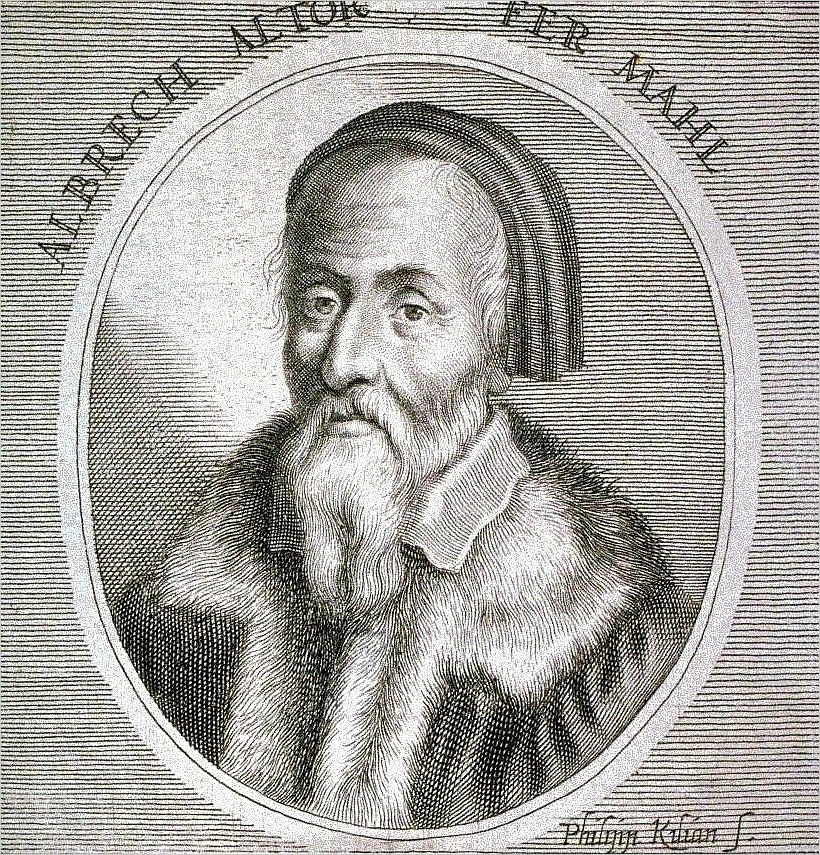This painting is called the Battle of Alexander at Issus, created by Albrecht Altdorfer nearly 500 years ago.
It's the 16th century equivalent of epic cinema - an entire film played out in a single, vast scene...
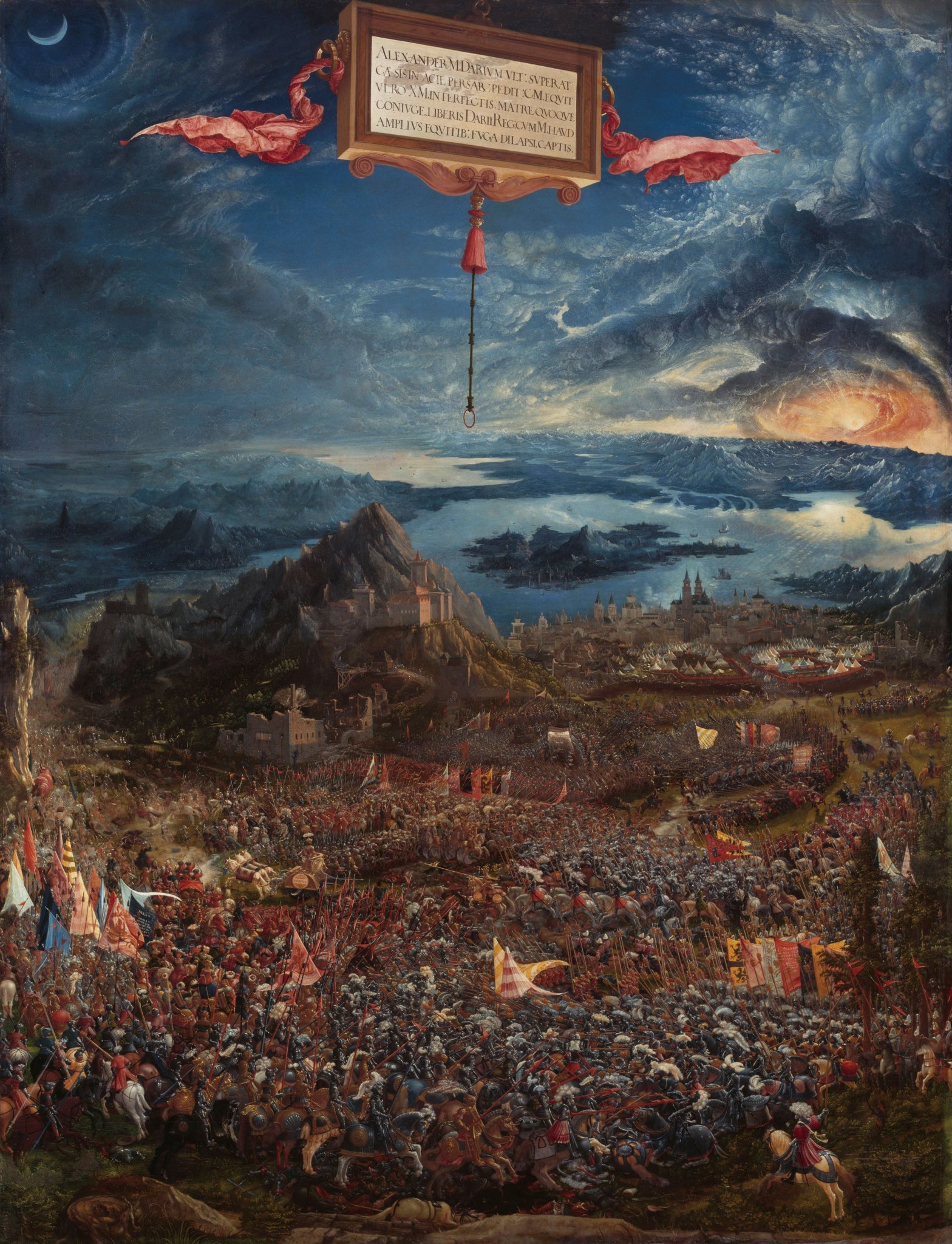
This painting is called the Battle of Alexander at Issus, created by Albrecht Altdorfer nearly 500 years ago.
It's the 16th century equivalent of epic cinema - an entire film played out in a single, vast scene...

This extraordinary painting was commissioned by Duke William IV of Bavaria for his palace in Munich.
It depicts the Battle of Issus between Alexander the Great and Darius III of Persia in 333 B.C., which resulted in a Macedonian victory & paved the way for Alexander's conquests.

It is perhaps the supreme example of the "world landscape" style of painting, an unusual genre popular in the 15th and 16th centuries.
World landscapes show an enormous geographical scene, often with mountains and oceans, using unrealistic perspective and tiny human figures.
Landscapes had long been of little interest to European painters, but Altdorfer and a handful of other artists based in southern Germany & Austria bucked that trend.
The beauty of their surroundings in the Danube Valley may have had something to do with that:
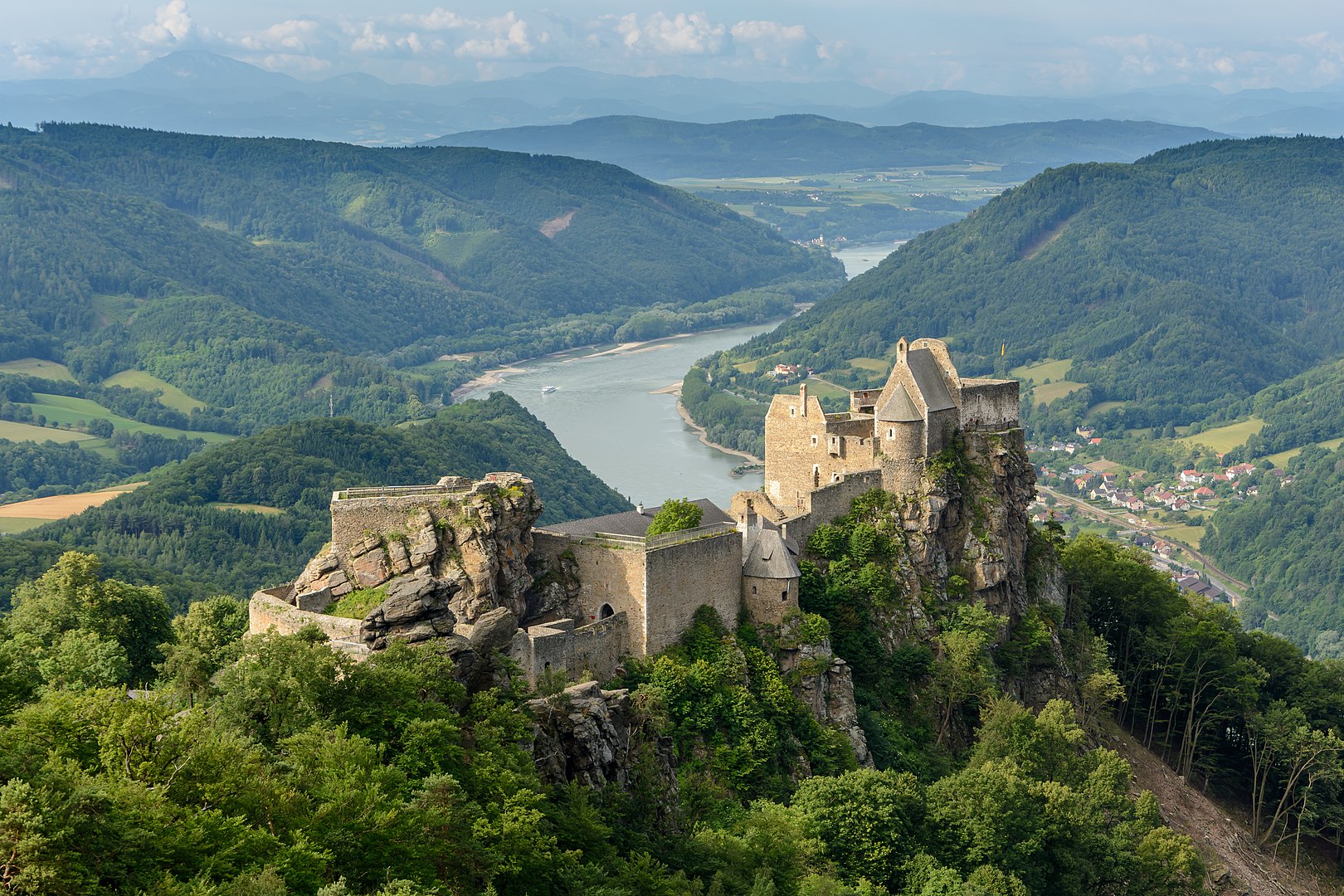
And so this nascent group has been called the "Danube School", the first movement of landscape painters in post-classical Europe.
Such as Wolf Huber, whose Allegory of Salvation (1543) depicts the famous crucifixion scene with an unusually well-developed landscape background.

Or like Lucas Cranach the Elder, a peripheral member of the group. In Hunting Near Hartenfels Castle (1540) the landscape dominates.
And with those little moments of action playing out across it, we can see the stirrings of the "world landscape" genre.
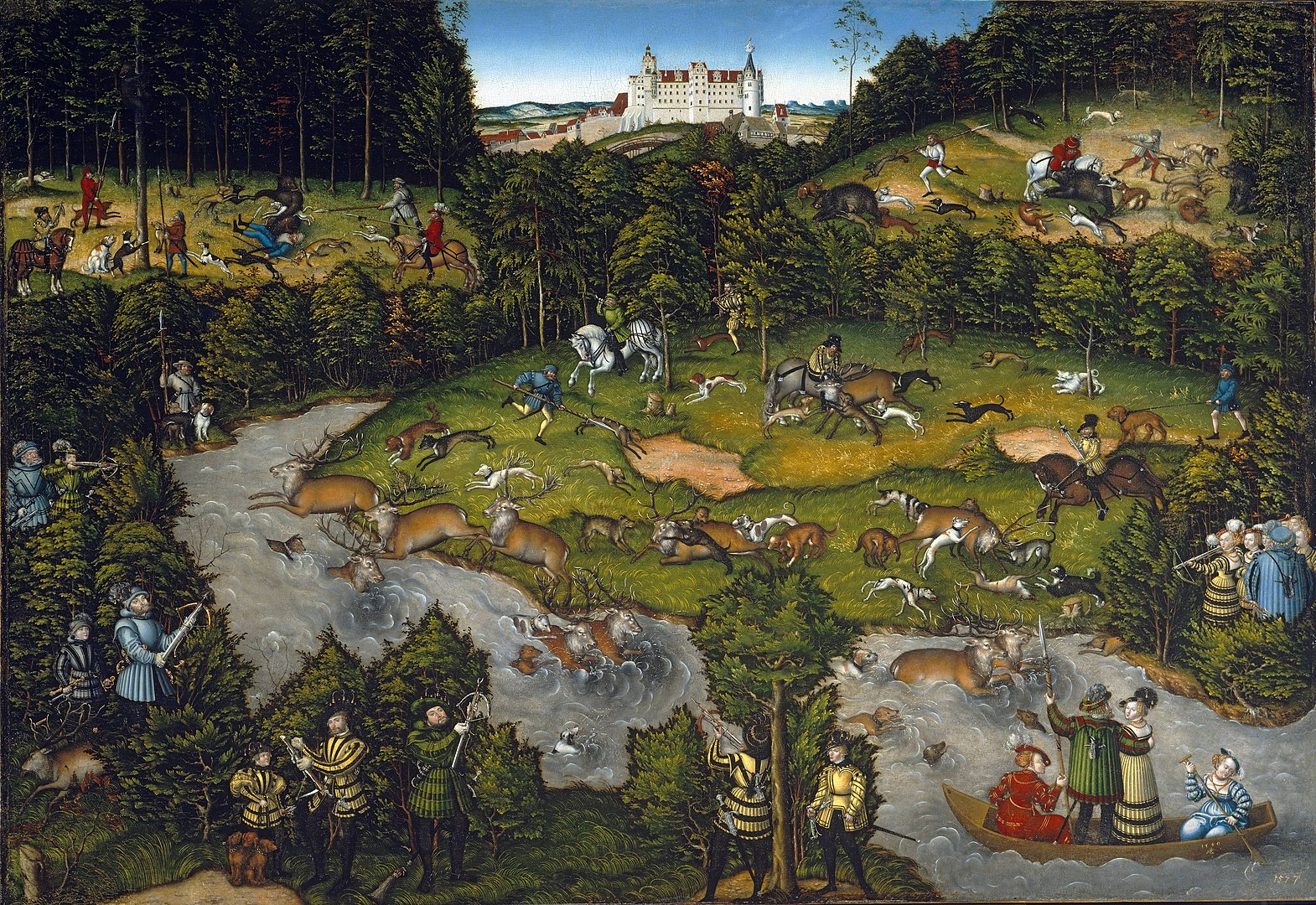
It's a theme we've seen before in the works of Hieronymus Bosch, a fascinating and bafflingly brilliant Dutch painter.
His Garden of Earthly Delights (1505) is surely one of art's most intriguing, unusual, and unforgettable masterpieces. Utterly unique.

Joachim Patinir, a Flemish artist, was also an early master of the world landscape style.
In both The Martyrdom of St. Catherine (c.1515) and Landscape with St. Christopher (c.1522) we see vastly receding and minutely detailed landscapes with impossible perspectives.


And, of course, there's Bruegel the Elder. His Procession to Calvary (1564) is a delight of minute details, of miniature dramas, self-contained scenes played out across a landscape of dream-like proportions.
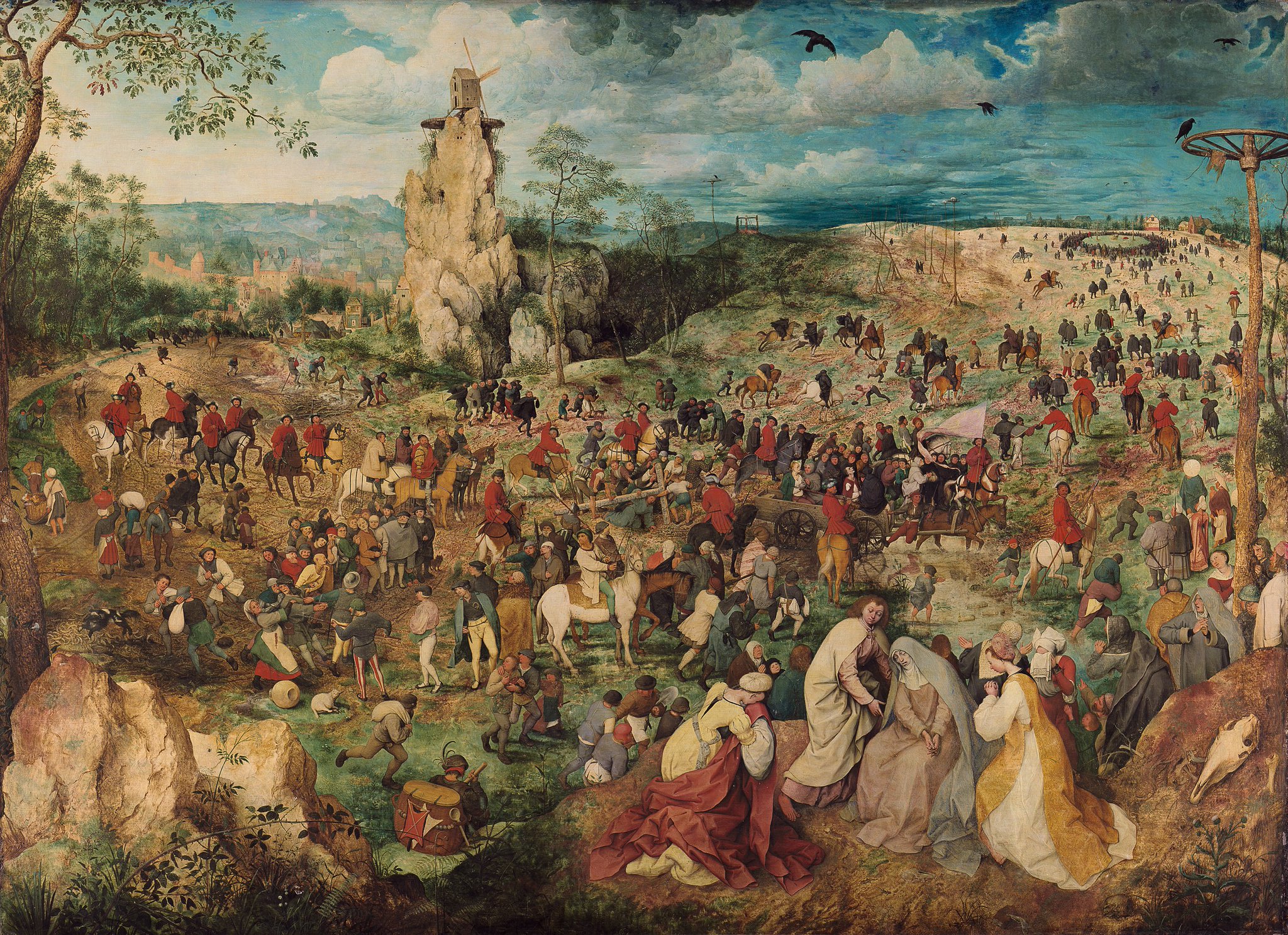
But it was Albrecht Altdorfer (1480-1538) who made the landscape itself a subject, inspired by the exquisite natural beauty of the Danube Valley.
As in this painting of a mountain range from 1540. There are no human figures here; the natural world alone was sufficient.
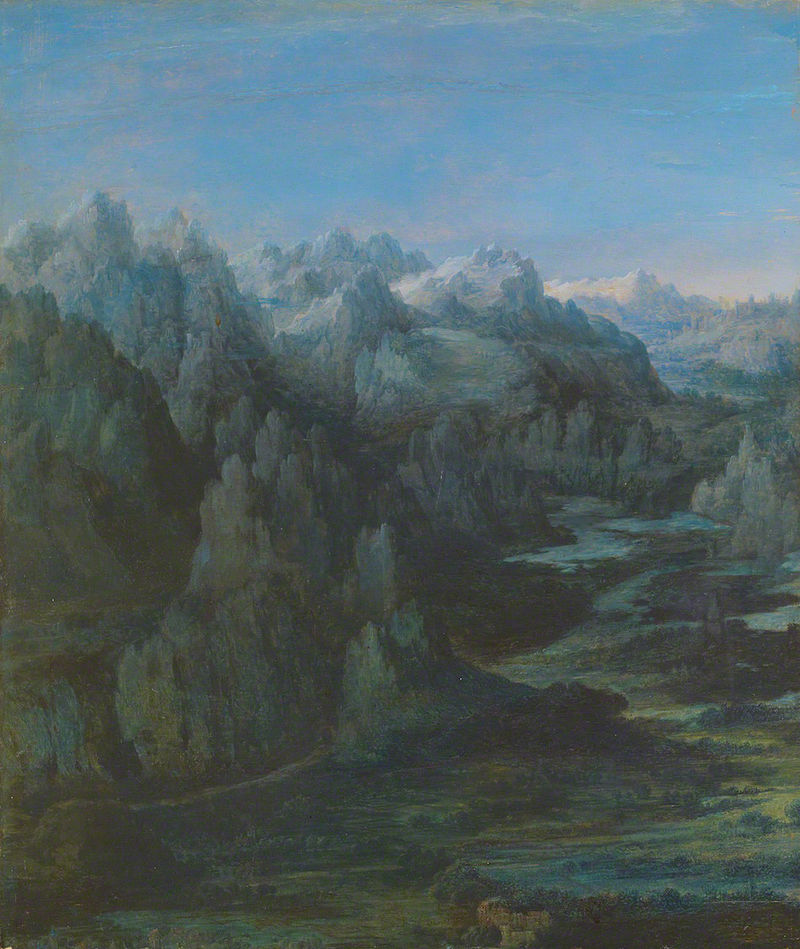
Returning to Battle of Alexander at Issus, it's interesting not only for its mastery of the world landscape, but also for its narrative.
It was completed in the same year as the first Ottoman siege of Vienna - 1529. Unsurprisingly, it's full of political and religious subtext.
Let's examine the details.
Notice that the soldiers look like Medieval knights; that's not how armies looked in the 4th century B.C.
But this wasn't mere ignorance by Altdorfer, and so it's also a great example of anachronism in art, which is way older than we might think.

Look at the colossal and strange skyscape, in which the sun is shining forth from a swirling funnel of minutely detailed red clouds.
This is positively apocalyptic. It feels like the Day of Judgment and casts an atmosphere of supernatural power over the whole painting.

And the crescent moon, too, a thin sliver of silver hiding in the upper left of the painting, balanced against the sun on the other side.
Altdorfer's setting is so vast that both night and day are depicted in a single scene.
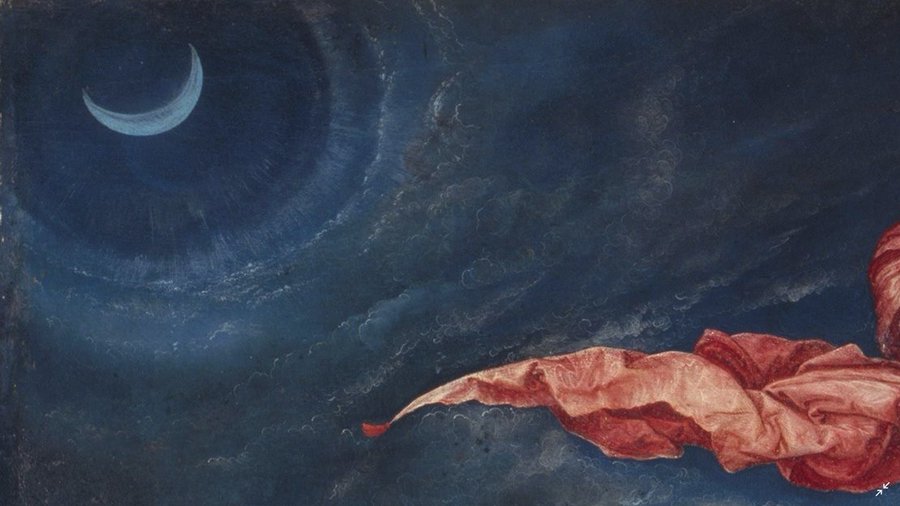
This is the Tower of Babel looming in the background, the centre of Babylon and Persia, homeland of Darius and his armies.
Notice how dark and hellish the place looks. We don't need telling who the "bad guys" are. This almost reminds you of Mordor, surrounded by dark mountains.
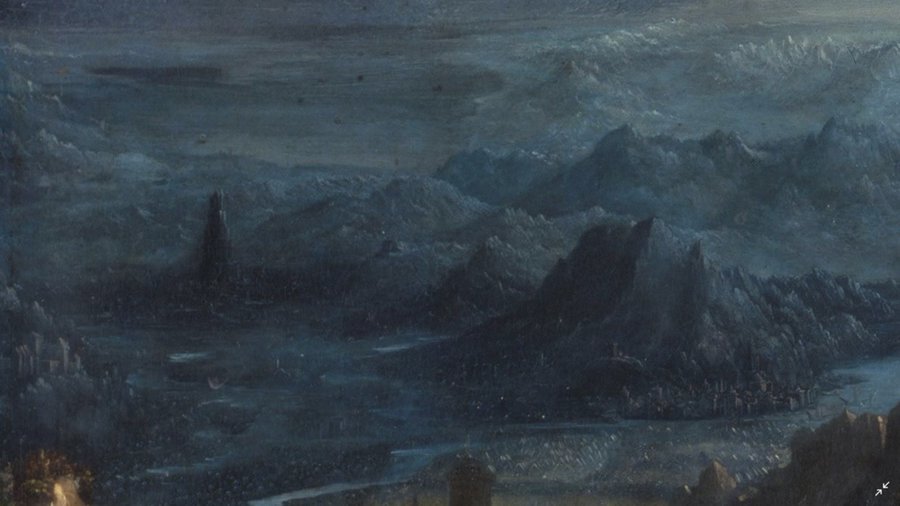
It also has some "meta" elements, such as the large floating plaque (translated below).
And, even better, each army holds a banner listing its number of troops and future casualties. Thus the whole story of the battle is communicated to the viewer.
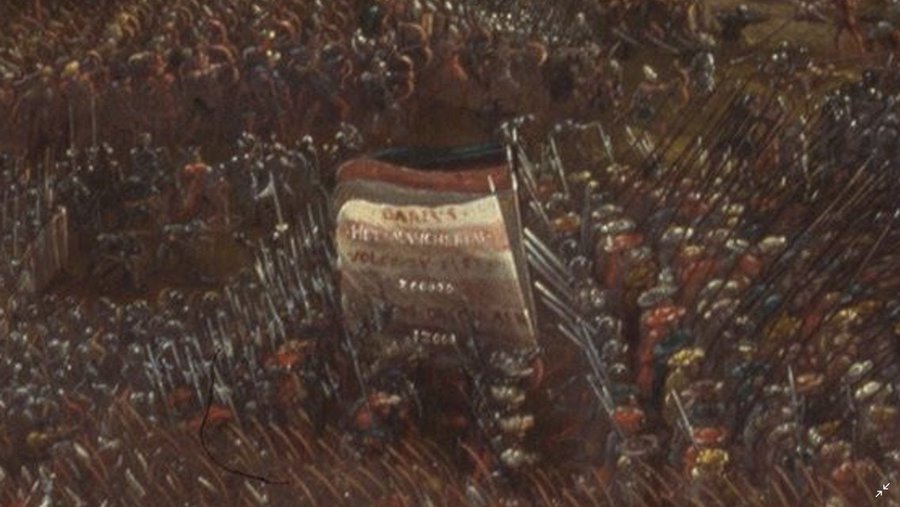
"Alexander the Great defeating the last Darius, after 100,000 infantry and more than 10,000 cavalrymen had been killed amongst the ranks of the Persians. Whilst King Darius was able to flee with no more than 1,000 horsemen, his mother, wife, and children were taken prisoner."

And here notice that Alexander the Great's Macedonian armies appear to be carrying the flag of the Holy Roman Empire.
Highly intentional anachronism & not-so-subtle messaging from Altdorfer for his patron, the Duke of Bavaria.

And here we can see the entire Eastern Mediterranean basin, including Cyprus in the middle.
Far from realistic - but that's the point. The World Landscape style produces a heightened, dramatic, Biblical atmosphere.
It captures many different moments in a single, epic scene.

Also notice how the Persian soldiers are wearing turbans and dressed - broadly - like Ottoman soldiers.
Again, Altdorfer was making a clear statement on behalf of his patron, Duke William of Bavaria. That the Ottomans were the Persians; the Holy Roman Empire like Alexander.
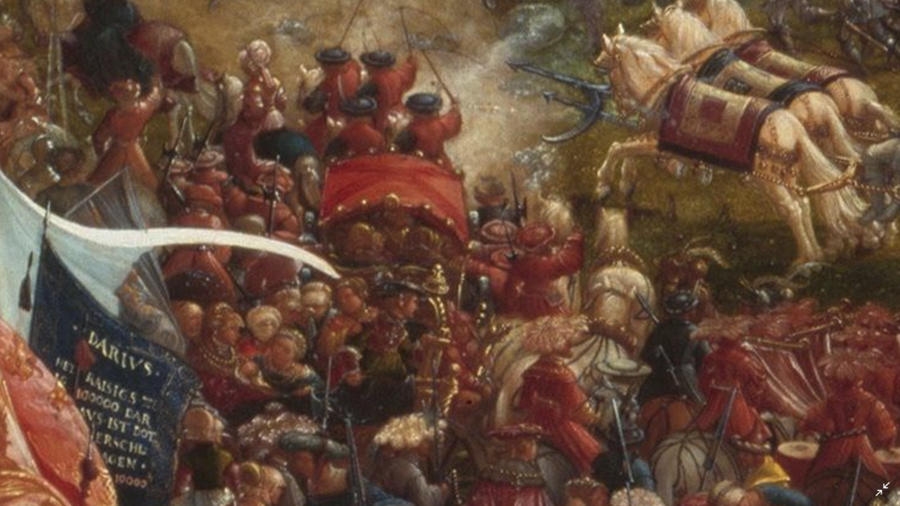
Altdorfer, though creating an ocean of detail and action, was a master of organising those details in a way that allowed specific things to stand out.
There's Darius in all his royal splendour; clearly labelled for the viewer.

And here's Alexander the Great, draped in gold, leading a cavalry charge, suitably heroic.
Again, labelled! Altdorfer made certain that the viewer can understand everything going on amidst the chaos, that the viewer can follow the story as it unfolds before our eyes.

And, zooming out again, we can admire the composition of the whole painting.
Though swarming with fascinating detail it is well-balanced: dynamic armies beneath a dramatic skyscape, mountains set off against oceans, vivid reds and golds against mellow blues and dull greys...

And here's Albrecht Altdorfer himself.
One can scarcely imagine how much effort was required to paint the Battle of Alexander at Issus. But, however long it look, the result was surely worth it.
An entire film in a single scene - and that, if anything, is the World Landscape.
